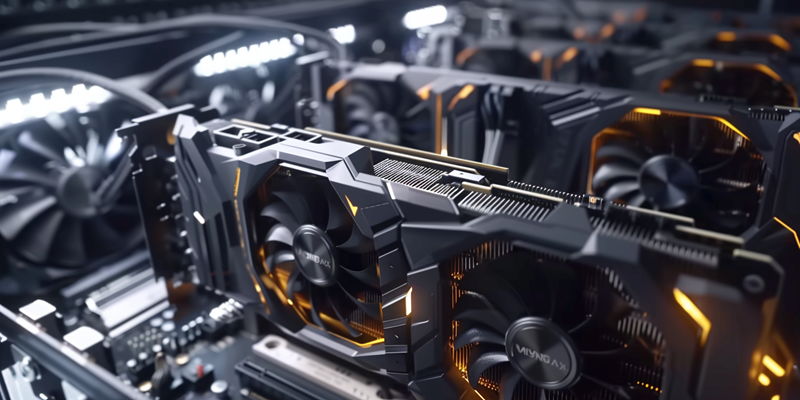The anticipation within the tech community is palpable as AMD gears up to release its next-generation RDNA 4 “Radeon RX 8000” GPUs, with a central focus on the Navi 48 and Navi 44 chips, scheduled for an early 2025 launch. These releases have significant implications for the gaming market, particularly as AMD continues its steadfast commitment to enhancing performance and power efficiency to meet the demanding needs of mainstream gamers.
Release Timeline
AMD’s roadmap is carefully crafted to make a significant impact at CES 2025, where the Navi 48 GPUs are expected to be unveiled, targeting a launch in the first quarter of the year. Following closely, the entry-tier Navi 44 GPUs are slated for release in the second quarter of 2025. This staggered release plan underscores AMD’s strategy to build momentum and maintain a presence in the market over an extended period. Each release is expected to draw considerable attention, not only for its technological advancements but also for the potential shifts it could create in the competitive landscape of gaming graphics hardware.
Performance and Efficiency
One of the standout features of the upcoming Navi 48 GPUs is their promise to deliver performance comparable to the existing Navi 31 chips, but with significantly improved power efficiency. This focus on efficiency is not merely about energy savings; it translates directly into better performance per watt, which is crucial for both gaming and professional applications. The Navi 44, on the other hand, is designed as an entry-tier successor to the Navi 33 series, offering accessible yet robust performance for a broader audience. AMD’s emphasis on power efficiency alongside performance marks a pivotal advance in GPU design, enabling users to enjoy high-quality experiences without the excessive power consumption typically associated with high-end graphics.
Product Positioning
AMD’s strategic focus on mainstream gaming solutions before venturing into more high-end territories is a calculated move reflecting market needs and competitive dynamics. By solidifying its mainstream segment with the RDNA 4 lineup, AMD positions itself to attract a wide range of gamers who prioritize both performance and value. The decision to initially concentrate on mainstream products before releasing a “top-to-bottom” family, potentially under the RDNA 5 architecture, suggests a long-term vision aimed at sustainable growth and incremental innovation. This phased approach allows AMD to fine-tune its offerings and gather critical market feedback before launching subsequent high-end solutions.
Technological Innovations
The RDNA 4 series is not only about iterative improvements but also introduces significant innovations, particularly in ray-tracing technology. With a new ray-tracing engine distinct from RDNA 3 GPUs, AMD is set to elevate gaming realism and visual fidelity to new heights. Additionally, there is speculation that AMD might employ 18 Gbps GDDR7 memory across all RX 8000 models, following hints from a Micron press release. Such advancements underscore AMD’s commitment to staying at the forefront of graphical technology, providing users with cutting-edge features that enhance their gaming and creative experiences.
Pricing Strategy
One of the most intriguing aspects of the upcoming Navi 48 GPUs is the anticipated pricing. These GPUs are expected to be more affordable than the top-tier RDNA 3 offerings, with the potential for Navi 31-level performance at a price point around $500 or even less. This aggressive pricing strategy is likely to attract a significant number of gamers looking for high performance without the premium cost, reinforcing AMD’s reputation as a value-driven company. By making advanced technology more accessible, AMD could potentially expand its market share and foster greater competition within the industry.
Future Directions
The tech community is buzzing with excitement as AMD prepares to launch its next-generation RDNA 4 “Radeon RX 8000” GPUs. These new graphics units, centered around the highly anticipated Navi 48 and Navi 44 chips, are set to hit the market in early 2025. This upcoming release is poised to make waves in the gaming industry, especially as AMD remains dedicated to improving both performance and power efficiency. The company’s focus on these key aspects is designed to fulfill the demanding requirements of mainstream gamers worldwide.
As AMD continues to innovate, gamers eagerly await the tangible benefits these advancements will bring. Performance enhancements are expected to deliver smoother gameplay and higher frame rates, while power efficiency improvements aim to reduce heat and power consumption. These changes not only promise a superior gaming experience but also highlight AMD’s commitment to responding to the evolving needs of the gaming community. With the RDNA 4 “Radeon RX 8000” series, AMD endeavors to set a new standard for gaming GPUs, making this launch highly significant for tech enthusiasts and gamers alike.

